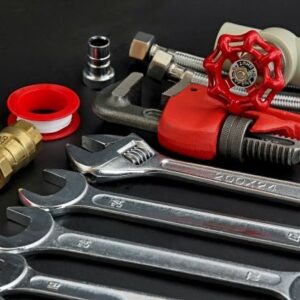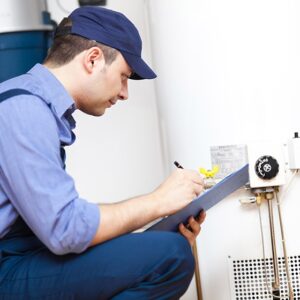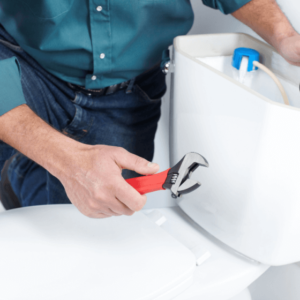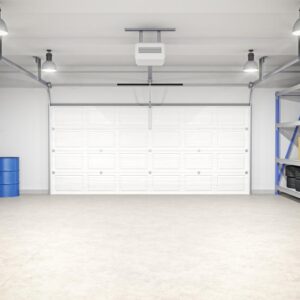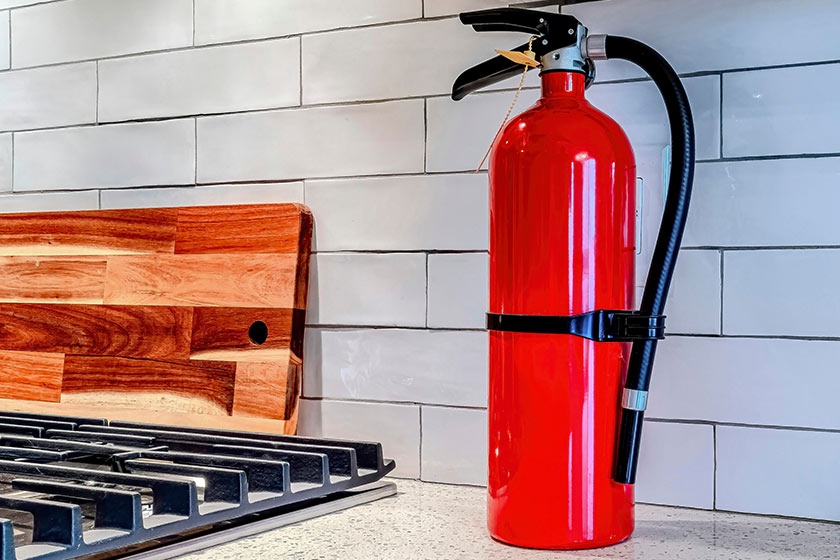Fire extinguishers have varied ratings and categories to tackle different types of fires, making selecting the right one for your home challenging. The good news is that information is available to simplify your decision.A good rule of thumb is to keep fire extinguishers in areas where fires are likely to start because their location could make the difference between life and death. Here is a helpful guide on the types of fire extinguishers on the market, including classes, uses, and color codes.
What Is a Fire Extinguisher?
A fire extinguisher is a portable safety system that discharges an agent that extinguishes or controls small fires. Extinguishers are often used in emergencies, but you want to avoid using one once a fire gets out of control. This includes situations where:
- The fire reaches the ceiling
- The escape route is threatened
- There is excess smoke
- There is an explosion hazard
Any of the above scenarios require the skills of firefighters. Relying on a hand-held cylindrical pressure for an out-of-control fire is risky.
Should I Get a Fire Extinguisher?
The short answer is yes — and learn how to use it safely. Acquiring a fire extinguisher needs to be a crucial part of your home safety plan. Not only can using the right one at the right moment save lives, but it can also prevent property damage by dousing the fire until you can call 911 for the fire department. Although you can use it to smother a fire, an extinguisher can become a dangerous piece of equipment in inexperienced hands. Also, you do not want to risk an electric shock by using the wrong type on an electrical fire. An extinguisher is useless on a rapidly spreading fire. The best thing to do is to leave before you get trapped inside a burning building. It’s worth your while to take the time to learn about the different types of extinguishers and the best places to store them.
Where to Keep Fire Extinguishers at Home
Here are five essential areas in your home to keep a fire extinguisher.
- Kitchen: In many homes, the kitchen is a common room to store the fire extinguisher. Keep it within 30 feet of the stove for quick access in an emergency. If you have a small kitchen, mount the extinguisher on the wall in an adjacent room.
- Bedrooms: Since most fires happen at night, it is a good idea to keep a fire extinguisher in every bedroom of your home.
- Garage, Workshop, and Shed: These are the places where you typically store combustible materials such as cleaning products and gas canisters. Keep a fire extinguisher with a flammable liquids label close by to put out sparks before they become a serious fire.
- Each level of your home: Store at least one fire extinguisher on each level of your home. If you have an attic and basement, put one in each of those areas because fires can start unexpectedly in any location.
- Near heating equipment: These areas include the fireplace and room heater, which contribute to many house fires.
Water Fire Extinguisher
As the name implies, a water fire extinguisher uses water to soak, penetrate, and cool down a fire. Because the stream of water can spread approximately 45 to 55 feet, this type of extinguisher is easy to use for someone inexperienced with putting out fires.The water extinguisher works well on cloth, paper, plastic, trash, and wood.
Foam Spray Fire Extinguisher
Class A and Class B fire extinguishers are the foam spray type. They work by sealing a liquid and are best for fires started by fuels such as diesel or gasoline. This type of extinguisher starves the fire and prevents flammable vapors from filling the air. The ability to use the foam spray on paper and wood makes it a versatile extinguisher in your home.
ABC Fire Extinguisher
The ABC fire extinguisher is named because it is a multipurpose fire extinguisher that can be used for:
- Class A: cloth, paper, plastics, trash and wood
- Class B: flammable gases and liquids such as acetone, gasoline, grease, and oil
- Class C: electrical fires, including equipment that is plugged in
This fire extinguisher is best for apartment buildings, homes, offices, vehicles, and boats.
Carbon Dioxide Fire Extinguisher
As an odorless gas, carbon dioxide is harmful to inhale. Yet, it works as a Class B and Class C fire extinguisher to put out flammable gas and electrical fires.A carbon dioxide fire extinguisher is typically found in factories and mechanics’ shops since it does not leave a residue. This type of extinguisher also meets most hospital medical equipment requirements.
Wet Chemical Fire Extinguisher
With a wet chemical fire extinguisher, you can put out fires started by cooking oils and fats such as butter, olive oil, sunflower oil, and lard. When used correctly, this type of fire extinguisher quickly douses the flames.It further controls the fire by cooling the burning oil. Finally, a soap-like solution seals the burned surface to prevent the fire from reigniting. The wet chemical extinguisher also works on flammable liquids, fabric, wood, and paper.
Color Codes for Fire Extinguisher Types
To make it easier to identify the different types of fire extinguishers quickly, each one has a unique color code:
- Red for water fire extinguishers
- Cream for foam extinguishers
- Yellow for wet chemical fires
- Blue for dry powder
- Black for carbon dioxide extinguishers
What Does the Letter on My Fire Extinguisher Mean?
One of the most important first steps in purchasing fire extinguishers is understanding their ratings. Each extinguisher is filled with fire suppressant materials to put out a fire without harm to you or your home. For households, fires are placed under three classifications based on what is burning. The most common fire extinguishers will have the following letter to help you identify which one to buy:
- Class A for solid combustibles other than paper, cloth, wood, rubber, and plastics
- Class B for gasoline, grease, oil, paints, and other flammable liquids
- Class C for appliances and outlets
- Class K for cooking oils, vegetable fats and animal fats
Fire Extinguisher Service: When to Call a Pro
Generally, the contents inside a fire extinguisher do not expire. However, the vessel can lose pressure over time. If left unchecked, it will not perform when needed. Therefore, you want to have the fire extinguishers in your home checked yearly. A licensed professional can determine if the pressure is low enough to render the extinguisher ineffective in an emergency. If the pressure is low, they can recharge the fire extinguisher so that you won’t have to replace it. They will also inspect the equipment for damage.It is also a good idea to schedule long-term fire extinguisher services based on the types you have in different areas of your home.
How to Know if Your Fire Extinguisher Is Functioning Properly
Optimal performance is crucial to combating a fire. For example, a fire extinguisher that is not optimally charged may not operate when you need it most. One way to know this is if the needle does not point in the green “charged” zone. True Value stores have a variety of fire extinguishers suitable for keeping your home and family safe. Find a location near you.

